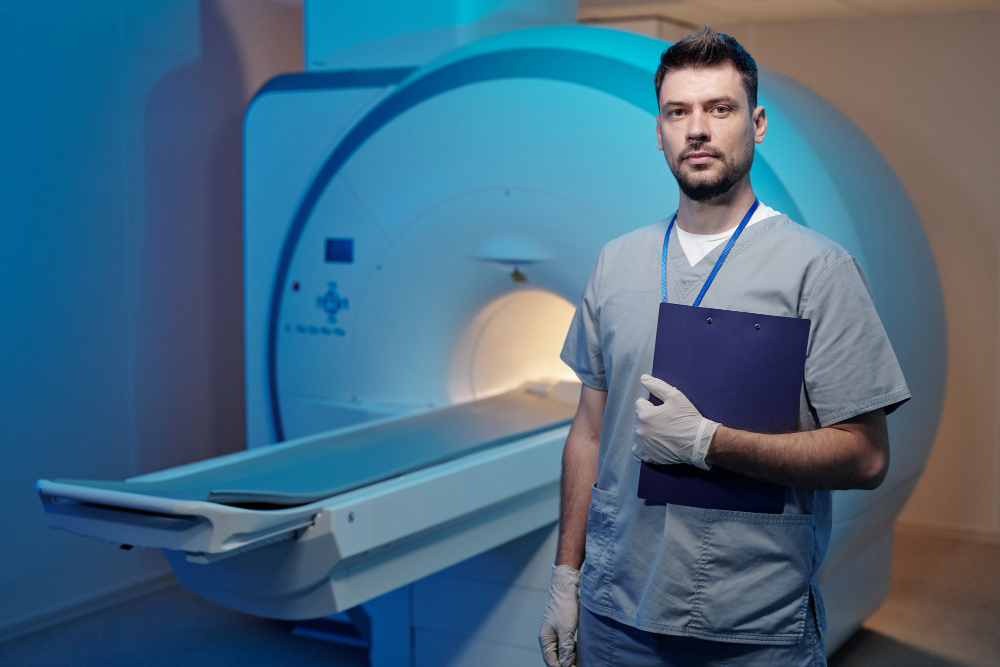
Radiography Degree Guide
Radiography is a vital part of modern healthcare. Whether you are drawn to Diagnostic Radiography,
which involves imaging techniques to identify illness and injury, or Therapeutic Radiography, which focuses on the treatment of cancer using radiation, both fields offer meaningful and high-impact careers.
This guide explores how to become a radiographer in the UK, and how the profession compares internationally in terms of education, training, and career prospects.
Studying Radiography in the UK
In the UK, radiographers are regulated by the Health and Care Professions Council (HCPC). Degree courses are also approved by the Society and College of Radiographers, ensuring they meet professional standards.
Types of Radiography Degrees:
-
Diagnostic Radiography (BSc Hons)
-
Focuses on imaging techniques such as X-rays, CT, MRI, ultrasound, and nuclear medicine.
-
-
Therapeutic Radiography (BSc Hons)
-
Involves planning and delivering radiotherapy for cancer treatment, working closely with oncology teams.
-
Course Structure:
-
Full-time undergraduate degrees typically last three years.
-
Courses combine university-based study with extensive clinical placements in NHS hospitals.
-
Subjects include anatomy, physics, imaging technology, pathology, patient care, and clinical decision-making.
Entry Requirements:
-
A-levels or equivalent (including at least one science subject, often Physics or Biology).
-
GCSEs in English, Maths, and Science.
-
An interview, DBS check, and health screening are typically required.
-
Strong communication and teamwork skills are essential.
Funding:
-
Students in England can apply for the NHS Learning Support Fund, including a £5,000 non-repayable grant each academic year.
-
Tuition and maintenance loans are also available through Student Finance.
After Graduation:
-
You must register with the HCPC to practise legally as a radiographer in the UK.
-
Career options include working in the NHS, private sector, research, education, or specialist areas such as MRI or oncology.
-
With experience, radiographers can progress to advanced practice, management, or reporting roles.
Studying Radiography in Europe
Radiography is a recognised and regulated profession across Europe, but education and licensing requirements vary by country.
General Overview:
-
Courses typically last three to four years, leading to a bachelor's degree in radiography or medical imaging.
-
Most countries separate diagnostic and therapeutic training, as in the UK.
-
Clinical placements are integrated into degree programs.
-
Many programs are taught in the national language, though English-taught courses are increasingly available.
Popular Destinations:
-
Ireland: Offers similar BSc (Hons) programs to the UK, regulated by CORU.
-
The Netherlands and Finland: Offer English-language diagnostic imaging programs with strong practical components.
-
Germany and France: Radiography is often taught as a technical or applied science subject; local language proficiency is essential for clinical practice.
If you plan to work in the UK after studying in Europe, ensure your course is recognised by the HCPC or meets World Radiography Educational standards.
Studying Radiography in Australia and New Zealand
Both Australia and New Zealand provide globally respected radiography education with a focus on clinical competency and technology.
Australia:
-
Offers Bachelor of Medical Imaging (Diagnostic) and Bachelor of Applied Science (Medical Radiation Science).
-
Some universities offer dual specialisations or postgraduate pathways into therapeutic radiography.
-
Regulated by the Medical Radiation Practice Board of Australia, under the Australian Health Practitioner Regulation Agency (AHPRA).
-
Courses typically last three to four years, with mandatory clinical placements.
New Zealand:
-
Offers a Bachelor of Medical Imaging (Diagnostic), generally over three years.
-
Regulated by the Medical Radiation Technologists Board (MRTB).
-
Therapeutic radiography is available through the University of Otago and Auckland University of Technology, with a strong focus on radiotherapy planning and delivery.
Both countries provide strong employment prospects for graduates, especially in public healthcare.
Studying Radiography in Canada
In Canada, radiography education is available through both colleges and universities, and is regulated provincially.
Education Pathways:
-
Diploma or Degree programs in Medical Radiation Sciences, typically two to four years.
-
Some institutions offer combined bachelor’s programs with options to specialise in diagnostic imaging, radiation therapy, or nuclear medicine.
Licensing and Regulation:
-
Graduates must pass a certification exam through the Canadian Association of Medical Radiation Technologists (CAMRT).
-
Regulation is handled at the provincial level, so licensure requirements vary by region.
Canada offers solid career opportunities, but competition for placements and employment can be high. Practical training is emphasised throughout the program.
Studying Radiography in the USA
In the United States, radiography is well established, with a structured and certified pathway into practice.
Types of Programs:
-
Diagnostic Radiography: Typically a two-year associate degree or a four-year bachelor’s degree.
-
Radiation Therapy: Often pursued through a specialised associate or bachelor’s program, sometimes as an extension of radiography training.
Accreditation and Licensing:
-
Programs must be accredited by the Joint Review Committee on Education in Radiologic Technology (JRCERT).
-
Certification is through the American Registry of Radiologic Technologists (ARRT).
-
State licensure is required and varies by jurisdiction.
Bachelor’s degrees offer better career mobility and leadership opportunities, especially for therapeutic radiography or advanced imaging roles.
Final Thoughts
Radiography is a profession that combines technology, science, and compassionate patient care. Whether you're interested in diagnosing illness through imaging or delivering life-saving cancer treatments through radiotherapy, the pathway is clear and rewarding.
The UK offers structured, well-supported training with strong placement opportunities and NHS funding support. If you're considering international study, Australia, New Zealand, Canada, and the USA offer diverse options, while Europe provides a mix of traditional and modern approaches.
When choosing where to study, consider:
-
Type of radiography (diagnostic or therapeutic)
-
Language and clinical placement requirements
-
Course length and costs
-
Where you ultimately want to practise
Whatever path you take, a career in radiography promises a future filled with purpose, skill development, and the chance to make a real difference.




